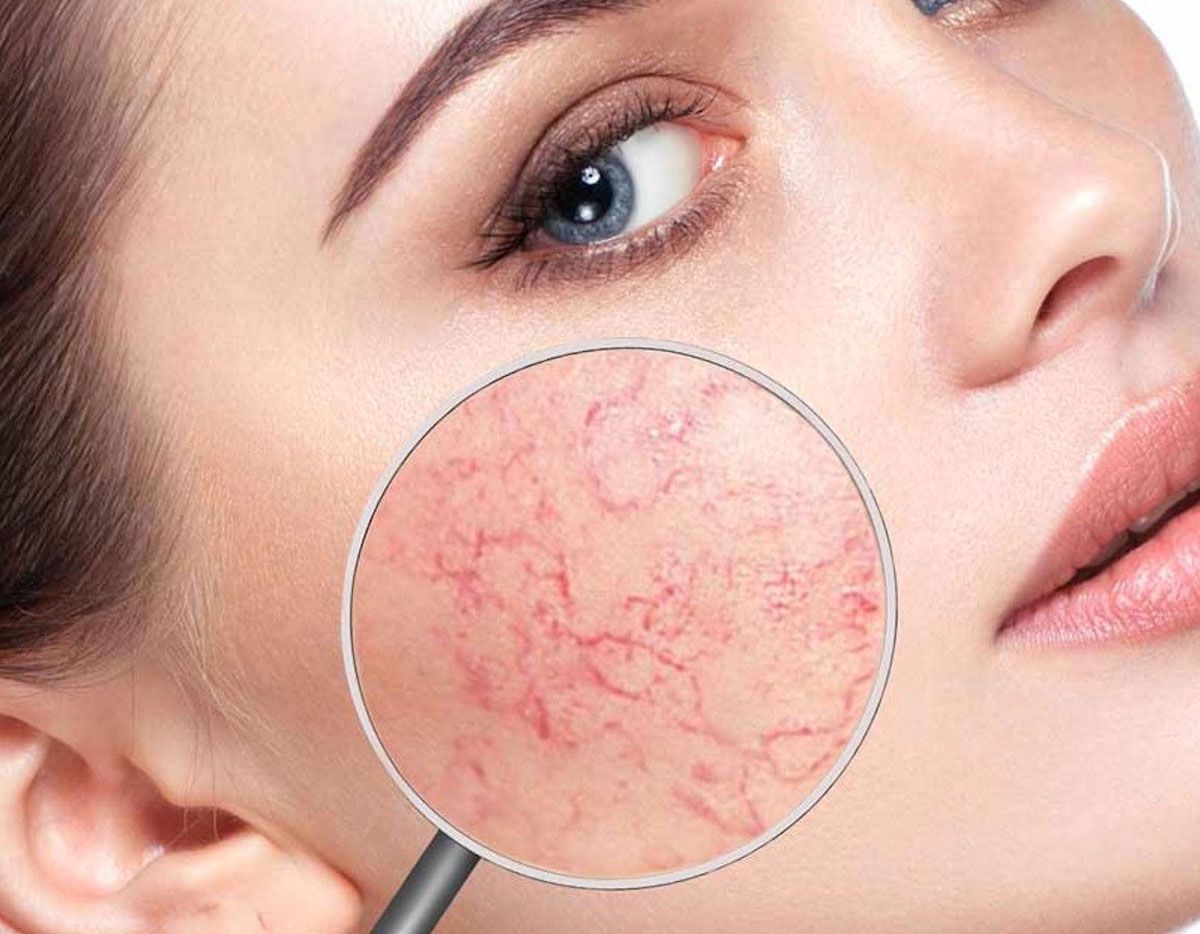Your Skin’s Microbiotic Connection to Rosacea

A number of recent studies have highlighted the potential connection between the skin’s microbiotic environment and conditions such as rosacea. Rosacea is considered a complex systemic inflammatory disease which often results in red blotches in the skin and can ofter include inflamed lesions, pustules, red spots on skin and what can appear like a rash on the face.
Rosacea has been shown to have a connection to intestinal (GI) problems in patients. Often microbiotic deficiencies in GI testing has shown a connection to potentially contributing to outbreaks of rosacea in patients. Such a relationship has led investigators to exam in the microbiotic environment of the skin of rosacea patients.
Researchers have found that the bacteria environment of the skin in rosacea patients is very different from that in healthy skin. Some bacteria species were very abundant that are not typically seen in uninvolved healthy skin and some bacteria were very much reduced.
For instance, researchers found that Campylobacter bacteria was very much abundant in patients with rosacea. Interestingly, the same bacteria was also to have been found many times in the gut microbiome in patients with ulcerative colitis and other GI diseases. Researchers are considering the similarity as to way explain the relationship between GI diseases and rosacea.
Prevotella bacteria, which has been linked to cardiovascular conditions including atherosclerotic plaques, were also found to be increased in the microbiome of rosacea skin. This may contribute to the increased association of cardiovascular disorders in rosacea patients. Interestingly, Acinetobacter bacteria were found to be very low in skin of rosacea patients, which may explain why allergic diseases tend to be more commonly seen in rosacea patients.
With this research, investigators are concluding that rosacea may need to be investigated as more than just a skin disease only anymore, especially with its increasingly clearer links to the microbiome and the associated systemic inflammatory diseases.
Past studies have demonstrated that antibiotics can exacerbate some of the GI symptoms associated with rosacea and certain types of antibiotics have an even greater link to some of these GI associations. Rosacea patients have a tendency for GI diseases and antibiotics may further exacerbate these illnesses.
Antibiotic stewardship is crucial. While patients may need antibiotics for rosacea, acne and many other skin conditions, doctors are concluding that it is very important to remain responsible when prescribing them to patients.
Another study dealing with Twins recently also showed the importance of the relationship of rosacea and the of the microbiome environment of the skin.
Patients with rosacea were shown to have a less diverse facial skin microbiome, according to 2017 study.
Depending on the subtype, patients with rosacea can present with symptoms of flushing, redness, pimples, pustules, and dilated blood vessels typically located on the central face. Among factors associated with symptoms is a possible inflammatory reaction to the skin microbiome. Researchers in this 2017 study highlighted some of these exacerbating factors and the importance of the microbiome in the treatment and management of rosacea patients.
Researchers conducted a study during the 2017 Twins Day Festival in which identical and fraternal twins with and without rosacea were surveyed on numerous parameters including history of rosacea as well as various environmental factors. Microbiome data was collected and analyzed and Rosacea evaluation was made by a board-certified dermatologist. The vast majority of participants with rosacea were assessed to have moderate to severe disease.
Results showed that individuals with rosacea are more likely to currently own pets, have fairer skin, and consume more alcohol than their control counterparts. Researchers found that although individuals with rosacea demonstrated a decreased variation in facial cutaneous microbiome compared to control, there was no significant difference in bacterial load in the facial cutaneous microbiome or enteral microbiome between rosacea or their counterpart controls.The amounts of bacteria did not really differ terribly much between the people with rosacea and the control population. However, it was the diversity and the variety of organisms that were found in the skin and to a lesser extent in the gut flora was of interest to investigators.
Data showed that there was a three- to four-fold decrease in abundance of facial cutaneous microbiomes in rosacea patients compared to control patients. In the gut microbiome, researchers found a significant reduction in abundance of other microbiomes and a six-fold increase in microbiome Prevotellaceae in rosacea compared to control.
The results from this study show a strong relationship between the microbiome of the skin and gut. Although much work still needs to be done, this data could be used to potentially help determine who might be more prone for inflammation. If potentially having the decreased diversity set the individual up for more inflammation, or vice versa where potentially organisms are lacking, maybe restoring the balance could decrease inflammation and improve rosacea symptoms.
At present, the genesis of rosacea symptoms remains unclear as to whether certain organisms are being missed, if there are certain organisms that perpetuate the inflammation in the skin, or if the inflammation itself leads to a decrease in the variety of organisms.
“Beyond an elusive probiotic pill to attempt to restore balance, one of the best thing rosacea patients can do is to practice good skin hygiene, regularly using sunscreen and moisturizer, and maintain a well-balanced diet. This way, patients could hopefully develop a healthy and even microbiome inside and outside of their body.
If you have struggled with rosacea or know someone who does, consider joining our upcoming Rosacea Clinical Trial. Call 817-795-746 extension 339 or email us at studies@acderm.com to see if you qualify.
(Source: Dermatology Times, July 2020)







